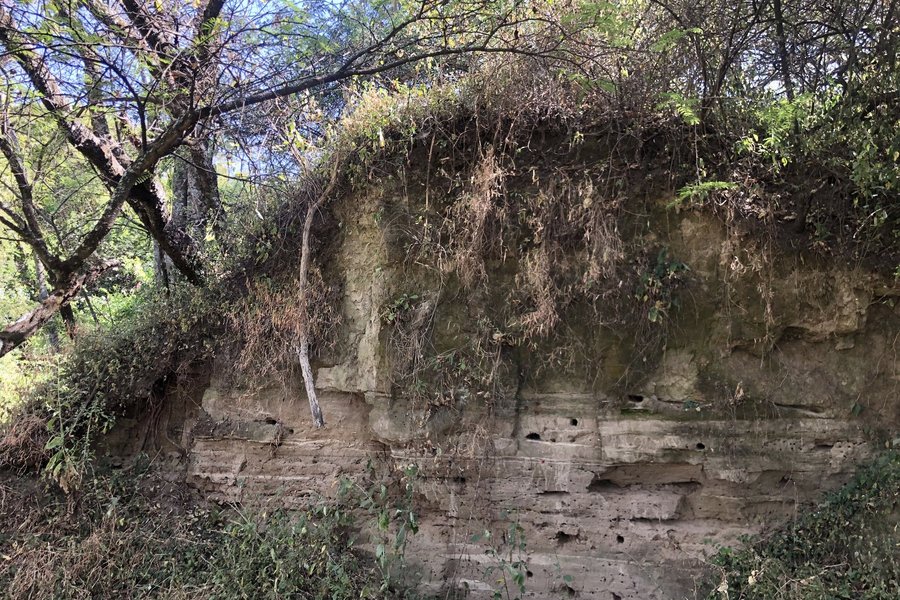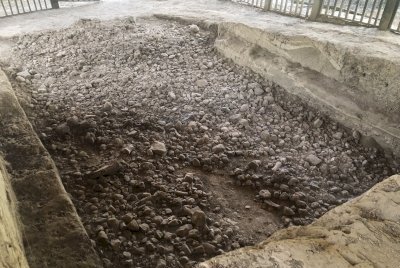Ethiopia
Melka Kunture and Balchit
Melka Kunture and Balchit: Archaeological and Palaeontological Sites in the Highland Area of Ethiopia represents an ancient volcanic landscape in the Awash Valley used by humans since prehistory.
Tens of thousands of lithic tools, faunal and some human fossilized remains have been discovered. The tools were mainly made of obsidian, of which the primary source is at Balchit.
Community Perspective: Daytrips from Addis to the WHS of Tiya also often include Melka Kunture, as it is on the way. Boj recommends the on-site museum.
Site Info
Official Information
- Full Name
- Melka Kunture and Balchit: Archaeological and Palaeontological Sites in the Highland Area of Ethiopia (ID: 13)
- Country
- Ethiopia
- Status
-
Inscribed 2024
Site history
History of Melka Kunture and Balchit
- 2024: Name change
- Upon inscription on the request of ICOMOS from "Melka Kunture and Balchit Archeological and Paleontological Site" to "Melka Kunture and Balchit: Archaeological and Palaeontological Sites in the Highland Area of Ethiopia"
- 2024: Inscribed
- Inscribed
- 2022: Incomplete - not examined
- incomplete dossier (for 2022)
- 2020: Revision
- Renomination of Melka Kunture and Balchit Archaeological Site (2012)
- 2012: Revision
- Bachilt Archaeological Site added to the nomination
- 1981: Deferred
- At Bureau - Need Tentative List
- 1980: Deferred
- 1979: Deferred
- Bureau meeting - info requested in 78 still not in place
- 1978: Deferred
- Bureau meeting - info requested
- Type
- Cultural
- Criteria
- iii
- iv
- v
Links
- UNESCO
- whc.unesco.org
- Official
-
- melkakunture.it — Website of the Italian-Spanish Archaeological Mission
All Links
UNESCO.org
- whc.unesco.org — whc.unesco.org/
Official Website
- melkakunture.it — Website of the Italian-Spanish Archaeological Mission
Community Information
- Community Category
- Archaeological site: Prehistoric
Travel Information
Recent Connections
-
Name changes
Upon inscription on the request of ICOM… -
Early Pleistocene
"The Melka Kunture and Balchit Archeolo… -
Ongoing Archaeological digs
"Melka Kunture was discovered in 1963. …
Connections of Melka Kunture and Balchit
- History
-
-
Palaeolithic and Mesolithic
"The Melka Kunture cluster of Palaeolithic archaeological and palaeontological sites testifies to hominin occupation of the area from around two million years ago (...)." (AB Ev) -
Early Hominid Remains
"yielded remains of Homo erectus, Homo heidelbergensis and archaic Homo sapiens" (AB ev)
-
- Ecology
-
-
Fossils
Crit iii: "Hominin fossils of Homo erectus, Homo heidelbergensis and archaic Homo sapiens discovered" -
Obsidian
'Heaps of by-products of obsidian knapping activities alternate with natural exposures, and with glittering stretches of land. This is an impressive sight over thousands of square meters, where randomly abandoned volcanic-glass implements reflect the light of the sun. The relationship between modern human groups and obsidian sources is in full sight. - UNESCO Description
-
- World Heritage Process
-
-
Cultural sites rejected for Natural criteria
Initially nominated as a mixed site but rejected for natural values -
Inscribed at third attempt or more
Deferred 4 times (1978-1981) -
Cultural landscape not recognized
-
Ten years or more to inscribe
1978-2024
-
- Human Activity
-
-
Ongoing Archaeological digs
"Melka Kunture was discovered in 1963. (...) Since 1999 excavations have been ongoing until present." (AB Ev)
-
- Timeline
-
-
Early Pleistocene
"The Melka Kunture and Balchit Archeological and Paleontological Site preserves evidence of hominin occupation of high altitudes from around two million years ago (...)." (AB Ev)
-
- WHS Names
-
-
Name changes
Upon inscription on the request of ICOMOS from "Melka Kunture and Balchit Archeological and Paleontological Site" to "Melka Kunture and Balchit: Archaeological and Palaeontological Sites in the Highland Area of Ethiopia"
-
News
No news.
Community Reviews
Show full reviews
Visited December 2024
The easiest way to visit this site is to have an organized one-day tour from Addis Ababa that takes you to Gombore component of <Melka Kunture and Balchit> and Tiya, another site on WHL. (You can combine it with the visit to Adadi Maryam church, the only rock-hewn church south of Addis.) Many Ethiopian guides and tour operators can organize it for you, you can find them on different social media; check some of them before making the final decision or ask people from this world heritage travellers’ community for some advice. Our (I travelled with a friend) guides to Melka Kunture and Tiya were very helpful and experienced.
The guide with a car and the driver took us from the airport and we… off to the south. We visited MK after Tiya. We started at a small museum located in the middle of the forest. By the bridge over Awash River there is a small handmade sign showing the way to the museum. No UNESCO plaque yet. The museum – they called this way – consists of three African style huts. We were lucky ‘cos there was a museum director at the site, and he was very, very happy to welcome us and show around the museum and the area. We did not pay any entrance fee, at the end of the tour we simply tipped him. There was not electricity in the museum, we used our torches to have a close view of the artefacts …
Keep reading 0 comments
It’s likely we are the first visitors from our community to visit this site after inscription at the 2024 session.
On our southern Etiopia tour this was our first stop. The site is anonymous, with no signs leading to it from the main road. At the site itself, there were no indications of its recent status as a World Heritage site.
We visited the Gombore site, which has five excavation sites, with #2 displayed as an open-air museum. From the entrance, it is a few hundred meters walk along an overgrown path.
This excavation site is approximately 800,000 years old. We saw several tools, fireplaces, and the bones of hippos and gazelles. A Homo erectus skull was also found here, which is now displayed in the National Museum in Addis Ababa. According to the site mananger there are also some old footprints, that testify a long existence of life in this area.
The site manager told us they have identified 65 possible sites in the area, with half of them currently been excavated. The findings range from 2 million years old to 150,000 years old Homo sapiens. There is certainly much more to discover in this area.
The site we visited appears to be a primary site. There is a small museum in a traditional house, displaying mostly tools from the surrounding excavation sites, along with some replica skulls from other parts of Africa. There are several tools made of obsidian from the Balchit site. …
Keep reading 0 comments
Visited Melka Kunture archaeological site in January 2023 - a quick day trip from Addis Ababa.
The site has an interesting museum exhibiting Ethiopia's rich archaeological heritage. Melka Kunture boasts for recording 1.7 million years of continuous prehistoric human occupation, apart from its rich lithic, flora and fauna fossil records (Photo is from the dig site with in-situ artefacts).
Travelers can arrange a visit to Melka Kunture with a trip to Tiya (a UNESCO World Heritage Site) and Adadi Mariam Rock Church, the only known rock-hewn church outside of Lalibela.
Keep reading 0 comments

